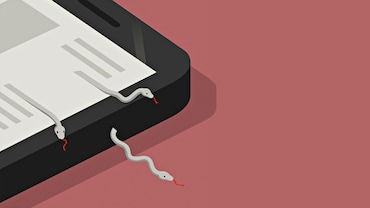Dum spiro spero: #MeToo
The #MeToo movement has a lot of heart. There are a lot of buts, too. Does it have a mind though? Time will be telling in this regard, but while I breathe, I hope.
 Wikimedia Commons
Wikimedia Commons
I have been putting off writing this for a while, mainly because I don’t know where to begin and how. Do I even want to relive those memories that, in turn, led me to doubt my self-worth and made me boil with an uncontrollable, destructive rage? Was I just a pretty young thing? What about my eager, impressionable mind that wanted to learn and expand? Instances of casual sexism and sexual harassment at the workplace that only made me work harder, better, but that also made me wipe off the makeup and desexualize myself before I entered the office. To have my work speak for itself but otherwise be invisible, or, at least, sexless.
If you’re a woman, you have perhaps felt this way too.
***
I am talking about the moment when ‘it’ became a movement. When we had had enough and were ready to break the walls of silence—one of systemic negligence and complicity—closing in, suffocating us till we were forced to do or die. Push back or get pushed into a corner. Till we had no other option but to scream our lungs out: ME TOO.
Yes, of course me too. So many times over. I don’t have to go into the specifics; you know how it is, never mind how it ought (or, not) to be. It, the big it—sexual violence and/or harassment—is so normalized, that I remember remarking to someone, almost callously, that it has become a rite of passage for women. How many men do I ‘call out’? How many cis-gendered heteronormative males claiming right to women’s bodies with the penile birthright that only extreme privilege accords do I even name and shame? To what effect?
I understand the movement’s immediate impetus; what centuries, nay millennia, of oppression can do to a people—an anarchic revolution born out of the anguished cries of women and allies that grow louder, arm-twisting the authorities to sit up and take notice. But I am reminded, history hasn’t been kind to revolutions, and anarchist theories are far more complicated than the popular definitions.

There has also been a change in the narrative, from ‘she must be doing it for the attention’ to ‘how could he?’ But without a larger direction and working with domain experts towards implementation of existing laws on prevention of sexual harassment, policy changes around gender and targeting the socio-institutional malaise instead of only going after individuals—who are but victims(?) of their privilege (so sad!)—the #MeToo collective seems to be following on the footsteps of last year’s moment: a crowd-sourced list of sexual offenders, with an opaque verification process, in academia. The only perceivable difference is, this year’s cathartic outpouring has found strength in larger numbers and a greater acceptance—but again with a fair bit of trolling (and a spurt in men’s rights activists?).
Maybe I am being unkind, perhaps I am a cynic. Yes, there has been immediate gratification in taking back the power (even if temporarily) and witnessing the dethroning of ‘important’ men in the somewhat organized spaces, but the unorganized sectors—of art, design, fashion, for instance, let alone the blue-collar jobs—remain unaccountable and out of bounds. How do you, for instance, bring to book an independent artist who has been accused of multiple cases of sexual harassment publicly (of course he denies the detailed ‘allegations’)? Who has long been known as a serial predator and a dubious character in polite-society drawing rooms, warnings uttered in hushed tones, the lurid details divulged with a fair amount of schadenfreude (‘the poor wife/daughter hasn’t a clue’), and the whisper networks of women’s groups, without the survivor of his ‘attentions’ bringing charges against him through due process of the law? (Local complaints committees all but exist on paper.) Do you separate the art from the artist? How? You can’t prevent him from creating, displaying and selling his art. He continues to thrive.
The need of the hour is educating and empowering girls and young women with the single-minded focus to be active agents, firebrands, of their own change. Meanwhile, we agitate and organize. Through a sustained campaign that creates measurable impact and parity. It’s all well and good to breach the citadels erected by patriarchy and dismantle disproportionate structures of power—but we also need to equip ourselves to occupy those vacated spaces.
No matter the means—the problematics of anonymous accounts, public lynching and social media trials, which also, to my mind, opens a Pandora’s box of similar acts of protest against social injustices (the legal process, long and arduous, is probably the same for everyone: blind)—the resulting engagement out of the spontaneous movement has stirred the status quo, giving voice to the abused and the oppressed and the pluck to take forward the fight.
The #MeToo movement has a lot of heart. There are a lot of buts, too, but does it have a mind? Time will be telling in this regard, BUT dum spiro spero (while I breathe, I hope).
_
Image used for representative purposes only.
Featured image source: Rob Kall/Flickr






